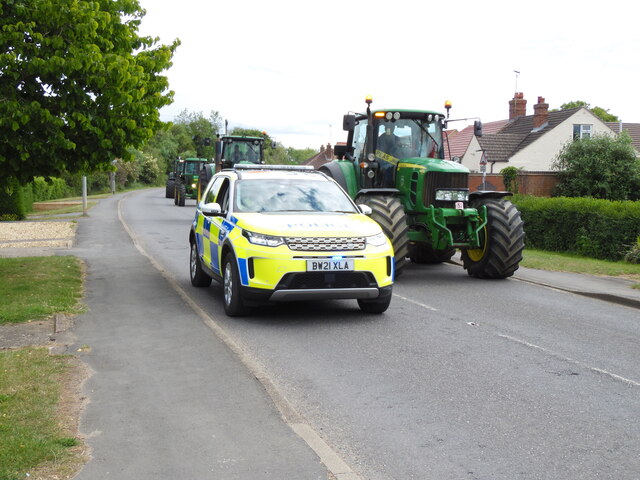Rural crime does not often make the headlines, but its impact across Yorkshire’s countryside is quietly devastating. Costing the country an estimated £44m last year, police and unions across the country battle this hidden yet persistent threat.
What is rural crime?
There is no single, legally binding definition of a “rural crime”. However, according to the Neighbourhood Watch, it can be widely regarded in practice as “any crime and anti-social behaviour occurring in rural areas,” rather than a dense urban area, such as a town or city.
Because rural communities tend to be more dispersed and less policed, some crimes go unreported or are harder to detect, particularly where organised criminal gangs (OCGs) operate on a highly coordinated level. This makes rural crime an ongoing challenge for law enforcement and communities alike.
The types of rural crime
Typically, the types of rural crimes are separated into one of four categories as per police guidelines:
- Agricultural crime: This includes theft of farm machinery, tools, fuel siphoning, damage to property, such as barns or field infrastructure, vandalism, and livestock worrying or theft.
- Equine crime: This involves working stables and equestrian centres. It includes theft of tack, trailers or horses, damage in stables, or trespass affecting horse paddocks and livestock worrying.
- Wildlife and environmental crime: This mainly includes poaching or illegal hunting and interference with protected species. It can also include environmental crimes, such as illegal waste dumping, polluting land or waterways, and fly-tipping.
- Heritage crime: Heritage crime is any offence which harms the value of heritage assets and their settings as some assets have specific protective legislation. It includes the theft or damage of historical buildings, lead theft from churches, and illegal metal detecting.
Rural crime in Yorkshire: why it’s a concern
Countryside makes up for a lot of Yorkshire’s landscape, with 85% of North Yorkshire being classed as very rural or “super-sparse”. Its population density is also five times below the national average, meaning it is a target for OCGs, whose crimes continue to go undetected, unreported, or unprosecuted due to the isolated area.
NFU Mutual, the UK’s leading rural insurer, estimates the economic cost of rural crime at £44m a year – a decrease compared to previous years. However, with livestock thefts and high value farming equipment remaining attractive targets to criminals, they say there is still much work to be done, despite any successes.
The impact on victims and communities
Rural crime is not only financially draining, but often, it can be emotionally damaging and distressing to those who suffer it, such as farmers, gamekeepers, and residents in rural areas.
Some of the deeper effects may include:
- Increased insurance premiums or difficulty obtaining cover
- Loss of confidence or safety in isolated communities
- Emotional strain on farming families when livestock, equipment or property is attacked, particularly for farmers who both live and work where the crimes are committed
- Wider knock-on effects and costs, such as if fencing is damaged, livestock escape and get injured, or further property is destroyed)
If you are a victim: how to report rural crime
If rural crime affects you, here’s what you should know:
- Call 999 in an emergency. Where there is a threat to life, a crime in action, or if you believe a crime is going to happen, phone the emergency services immediately.
- Report any non-life-threatening crimes online or using 101. Some police services, such as South Yorkshire Police have dedicated portals, where you can directly report a rural crime.
- Report anonymously if needed. Crimestoppers lets you pass on information about rural crime online or by phone without revealing your identity (0800 555 111).
- Engage with rural crime networks or watch schemes – some are organised by police services. Many areas in Yorkshire have Neighbourhood Watch groups that include rural crime initiatives and have recommendations for prevention.

